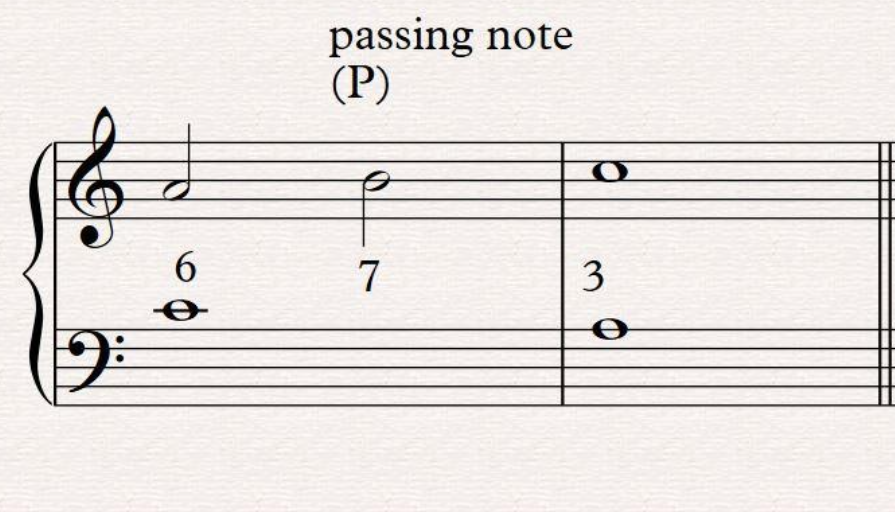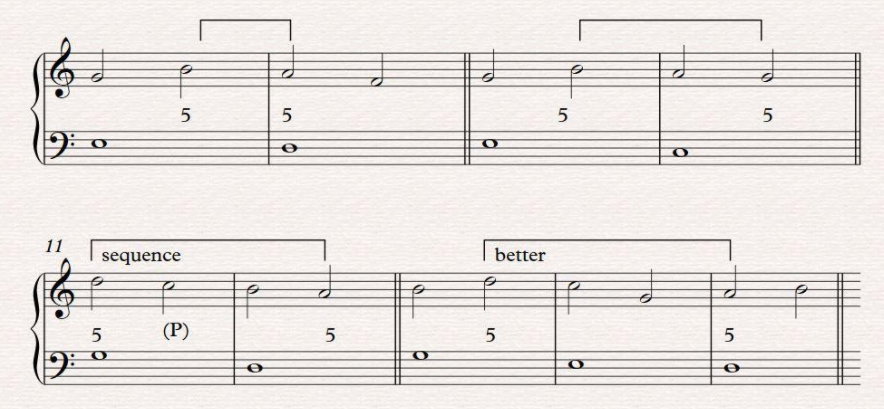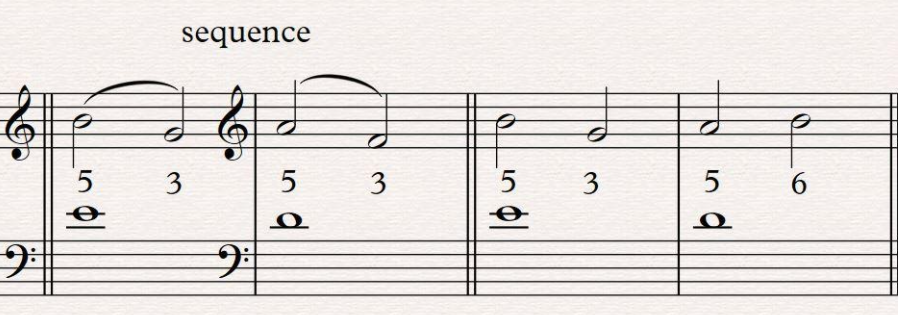Uncategorized
Counterpoint – Second Species
https://www.youtube.com/watch?v=OSjD2QyC2bY&feature=youtu.be
Counterpoint 2nd Species – WKMT Lesson Video
INTRODUCTION
The 2nd species work the relationship of two or three notes of the Counterpoint against one of the Cantus Firmus.
The figuration he uses are semibreves for the CF against minims for the Counterpoint. It is not a simple relationship of several notes against one, if so, the next species, which is the third, would have no reason to be.
The note values studied by the second species indicate is the relationship between time (the semibreves by the CF and pulse (the minims) in which the Counterpoint unfolds. Thus, each of these values refers to defining the different aspects of the mensural notation for the simple Counterpoint.
For this reason, the binary division arises here, which will give rise to the simple divisions and the ternary, which will manifest itself in the compound times.
Redefining the second species of Counterpoint, it studies the relationship of two voices where one marches by time (presented as bars), while the other does by pulses.
For the purpose of our study, and to analyse some counterpoint second species examples, we will use semibreves (whole notes) for the CF or time and minims (half-notes) for our pulses or Counterpoint.
Oblique movements inevitably occur, allowing the use of other harmonic sounds within each beat. Below we see our first example in which the lower voice is the CF and the upper voice the Counterpoint. Notice that the second notes within the bars are always on the weak part of the beat or second minim. The passing note marked as (P) from now on happens on the weakest part of the bar forming a seventh against the C on the CF:

SEQUENCES AND PARALLELISM
A melodic shape that is repeated at another pitch is called a sequence.
As you can see in the second species counterpoint examples below (number 11- the first two bars), the second beat’s Counterpoint has a sequence. However, suppose the Counterpoint, in the change of two successive beats, creates parallelism of perfect intervals and the melodic shape of each beat is different. In that case, the parallelism is masked, weakened and in this case, can be admitted.
Despite everything, perfect interval parallelism is used on rare occasions, because it creates a special kind of sonority that eliminates a voice itself.
Other types of parallelisms of perfect intervals are excluded in the Counterpoint, Fifths and octaves are parallel if they occur in adjacent beats. They are not parallels if a perfect interval is repeated in an interval larger than one beat.
Rules
Parallel fifths and octaves are forbidden.
The optimal distance between two perfect octaves and fifths is the same value we give to the TIME, in this case, the CF with a Semibreve.

In the first two binary examples, the parallel intervals appear at day less than a beat.
In the third example, the 5ths are at a reasonable distance, but the sequential melody on the Counterpoint gives the perception of parallelism. Only in the fourth example, the perfect fifths are at a distance larger than a time.
PASSING NOTES
Passing notes are introduced, resulting in harmonic intervals not used in the march of note against note are located in the weak beats.
The notion of “voice direction” (a term coined by Feliz Salzer in his book “Structural hearing” in page 83) appears starting from a stable moment and passing through a point of tension, reaching another stable moment, thus creating a melodic progression.
The passing note functions as a bridge between two consonances at an interval of a third. Only one passing note is allowed, whether it is in binary or ternary meters.
Consonances are used freely on each beat. They can make consonant passing tones or can be reached and left by a leap or skip.
PERFECT INTERVALS OVER ADJACENT BEATS
When they occur from one beat to the other, the 2nd beat can avoid the impression of parallelism. It means that if one pulse’s melodic shape causes a perfect fifth or octave and this shape is repeated in the next beat where the Counterpoint is parallel, it is exposed, and therefore, clearly perceived.

BEGINNING OF THE COUNTERPOINT
To further emphasize the independence between the CF and Counterpoint, the latter begins with a rest of a beat. The harmonic intervals between both voices are the same for all species: unisons, 5ths or octaves.
USE OF LEAPS IN THE MELODIC DISCOURSE
The actual movement is from a strong metric position to another, where the weak pulses are intermediate ones.
The functions of this movement are:
- To lead the movement with consonant passing notes or not,
- To break the line to go to another register through leaps or skips.
Characteristics of the Leaps
• Leaps used as a sort of contraction of passing movements, for example, 3rds, sometimes perfect fourths. After them, the melodic march continues in the same direction.
• True leaps, which interrupt the melodic line causing a change in the register or a change in melodic direction; these are fifths, 6ths and octaves. *The leaps must have a clear function in the discourse.
• They can be used to avoid sequences, those that are not part of voice guidance. In its place aspires to a melodic variety
• They depend on the giving of the following time is not a filler but is an integral part of conduction. If this does not happen, it calls into question the role of continuity
• The leaps are produced from the strong to the weak pulse or between weak pulses, and it is not advisable to be the other way around. The note we must arrive through a leap has to fall on a strong metric position.
- They can produce changes in the register or melodic direction.
- They can momentarily stop the melodic progression.
- Abbreviates the displacement of a skip of a third, rarely a fouth.

MELODIC FLUIDITY
From this species where the Counterpoint moves faster than the CF, it is necessary to avoid repeating the same sound immediately. Alternatively, there are melodic turns that always return to the same note. If this happens, it is necessary to avoid that the sound in question is located in the same place in consecutive times (for example, in the strong or weak pulse of each beat). In this way, a melody is obtained that changes with a fluid movement.
When a sound is repeated and especially when this reiteration appears in the same place in each beat, the melodic character is the opposite of the fluid melody. This recurring point, which becomes insistent, is useful for certain melodic contours. However, it has nothing to do with the melodic variety, and the conduction of the voice remains fixed in it.
The purpose of the second species is to bring this sense of balance between leaps and its compensation, to create a solid climax through several previous skips or leaps before, and to create a linear directional motion when desired. It is not to be considered a species that only “fills” the spaces in between the consonances based on the previous species, but to create an organic melodic structure.
About Fifths and Octaves by Similar Motion
The perfect intervals taken by similar motion will arrive by step progression in the upper voice. Furthermore, the preceding harmonic interval must be consonant.
A 5th or eighth taken by direct movement through a non-consonant passing note is considered as taken by leap.
CONCLUSION
The second species should not be understood as an aggregate of the first species where the weak pulses are filled between the notes between strong metric positions.

